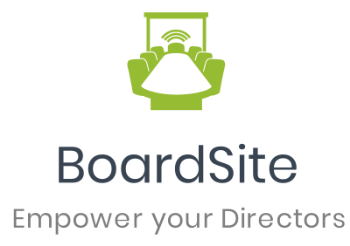May 4, 2023
Are you a member of a small nonprofit board looking to ensure that your organization operates at its best? Good Board governance is vitally important for your organization to run smoothly and achieve its objectives. This blog will provide an overview of 10 best practices for small nonprofit board governance that all board members should be aware of and implement. By following these guidelines you can set your board up on the right path to success, ensuring the health and longevity of your organization.
1. Learn about the legal and fiduciary responsibilities of your nonprofit board
As a board member, you have a significant role to play in the success of your nonprofit organization. To make informed decisions, it is vital to educate yourself on your legal and fiduciary responsibilities. Your fiduciary duty refers to the obligation to act in the best interest of the organization, which includes managing its assets responsibly and ethically. Understanding these responsibilities will help you avoid potential problems or legal issues and allow you to make well-informed decisions that will benefit the organization and its stakeholders. So take the time to learn about your legal and fiduciary obligations, and be an effective and responsible board member.
2. Appoint a Chairperson – Choose an experienced leader who can oversee meetings and ensure that objectives are met
When it comes to appointing a chairperson, experience, and leadership skills are key attributes to look for. A chairperson is responsible for managing meetings and ensuring that objectives are met, so it’s crucial to have someone in this role who is organized, clear-headed, and able to keep everyone on track. An effective chairperson will not only keep board meetings running smoothly but will also help to create a positive and collaborative atmosphere, where everyone’s ideas and perspectives are valued. By choosing someone with the right combination of experience and leadership qualities, you can ensure that your meetings are productive, efficient, and enjoyable for everyone involved.

3. Establish Bylaws and Procedures – Ensure that your nonprofit organization has clear board governance rules to follow
Effective governance is essential for the smooth functioning of any nonprofit organization, and establishing bylaws and procedures is a crucial step toward achieving this goal. By laying down clear rules and regulations that define the structure, responsibilities, and decision-making processes of the organization, bylaws, and procedures provide a roadmap for managing its affairs. They not only ensure transparency and accountability but also prevent conflicts and misunderstandings among members. Moreover, they lend credibility and legitimacy to the organization, making it more attractive to potential members and stakeholders. Overall, investing time and effort in developing comprehensive bylaws and procedures is a wise decision that can contribute significantly to the success and sustainability of your organization. It’s also important to keep these corporate governance documents and policies easily accessible for your board members and stakeholders.
4. Define the roles and responsibilities for your board members in accordance with the bylaws
Board members play a vital role in the success of an organization. To ensure that everyone is on the same page, it is important to clearly define the responsibilities and roles that come with being a board member. According to the bylaws, board members are granted specific powers and duties, such as selecting and monitoring the executive director, reviewing and approving budgets, and setting long-term goals for the organization. Additionally, each board member is responsible for bringing a unique perspective to the table based on their talents, expertise, and experiences. By understanding the defined roles and responsibilities of board members, nonprofit organizations can function more efficiently and effectively, and ultimately achieve their goals.
5. Set Goals and Objectives – Outline what the board should be working towards so that decisions are purpose-driven
Setting goals and objectives is a powerful way to ensure that the decisions you make are purposeful and informed. The board should outline specific targets they want to achieve, both short-term and long-term. By doing this, it becomes easier to create a clear roadmap on how to achieve them. Additionally, having goals and objectives in place helps to measure progress and success. When everyone on the board understands what they are working towards, it becomes much easier to make decisions that are aligned with achieving those goals. Setting goals and objectives is an essential step in steering your board in the right direction and ensuring that every decision made is strategic.

6. Ensure that board meetings are conducted in compliance with established policies and procedures
Running a successful nonprofit board meeting requires careful planning and attention to detail. To ensure compliance with established policies and procedures, it’s important to follow a structured agenda that outlines key topics for discussion and decision-making. This should include an overview of the meeting’s purpose, any relevant reports or updates, and any action items or decisions that need to be made. It’s also important to ensure that all board members have access to the necessary information and documentation in advance of the meeting, so they can come prepared and contribute to the discussion. With these best practices in mind, you can help to ensure that your board meetings run smoothly, efficiently, and in compliance with your organization’s policies and procedures.
7. Create Committees – Divide responsibilities among groups of members to ensure that broad goals are achieved efficiently
Creating committees is an effective way to distribute responsibilities among board members and achieve broad goals efficiently. By forming committees, members can focus on specific areas of the organization and take responsibility for their own areas of expertise. This allows for more streamlined decision-making and better distribution of workloads. Additionally, committees can provide valuable opportunities for members to develop new skills, work with others outside of their immediate area of responsibility, and gain a deeper understanding of the organization as a whole. Whether formed on a short-term or ongoing basis, board committees can be an important tool for achieving success.
8. Establish a conflict of interest policy for Board Members
As a non-profit organization, it is essential to have a conflict of interest policy for all board members. This policy sets guidelines for what board members can and cannot do regarding personal interests that may interfere with their commitment to the organization. If board members have competing interests, their ability to make impartial decisions may become compromised. Establishing a clear and concise policy can help prevent ethical dilemmas and ensure that decisions are made in the best interest of the organization. The policy should include disclosure requirements, procedures for addressing potential conflicts, and consequences for violating the policy. By having a sound conflict of interest policy, the organization can maintain transparency and accountability, fostering public trust and confidence.
9 Implement an Evaluation Process for Board Members
The success of any organization largely depends on its board members. Therefore, it is essential to evaluate their performance to ensure they are contributing to the organization’s growth and development effectively. Implementing an evaluation process for board members can help identify areas where they excel and areas where they may require additional support or training. This process also provides an opportunity for board members to reflect on their performance and receive constructive feedback that can help them improve their contributions and board service. Ultimately, a well-designed evaluation process can help ensure the board’s ongoing effectiveness and the organization’s success.
10. Develop a plan to recruit new Board Members
Recruiting new board members can be a challenging task, but with a well-thought-out strategy, you can ensure that you are attracting qualified and skilled candidates who can help your organization reach its goals. One effective approach is to start by clearly defining the qualifications and skills that you are looking for in a board member. Then, identify potential candidates from a variety of sources, such as professional networks, industry associations, and referrals from current board members. Next, create a compelling message about the benefits of joining your nonprofit board, emphasizing the impact that the organization has on its stakeholders. Finally, use a deliberate and structured recruitment process to ensure that you are giving all candidates an equal opportunity to showcase their qualifications and skills. By taking these steps, you can increase the likelihood of recruiting new board members who are the right fit for your organization.
Board governance is essential for small nonprofit organizations.
Adopting these best practices not only helps provide structure and order, but allows for greater accountability within the organization. It’s important to create an environment where everyone feels heard, yet decisions are made in accordance with a defined set of policies and procedures. By doing so, this allows board members to have confidence that their actions will help them reach the mission they may have established or adopted. Having a thoughtful process also serves to ensure that the non-profit remains compliant with the regulations governing its mission and goals. In conclusion, small non-profits should strive to instill these best practices of board governance in order to fully realize their purpose in benefit of those they serve.


